Philipp Kolmann is a designer who is interested in the relationship between the human body, human culture, food and microbes. Beyond food, the idea and motives behind rituals and practices of hygiene are also very important in his work. In some of the most ancient and familiar food processes involving microbiological alteration – such as cheesemaking – he found an ideal context for addressing the huge topic of hygiene and its power to threaten biodiversity, physical and even mental health.
What is the difference between hygiene and cleanliness? At first glance, they may seem to have much in common but whilst hygiene involves practices, such as hand-washing, required to protect us from infectious diseases, cleanliness refers to the absence of “dirt”. It implies the feeling of freshness and reflects the desire for social acceptability. For many people in our cleanliness-obsessed cultures, the excessive washing of our bodies is damaging the protective layer the body uses to ward off harmful agents. In the name of cleanliness, we are exposing our skin to products that are weakening what they are supposed to be improving.
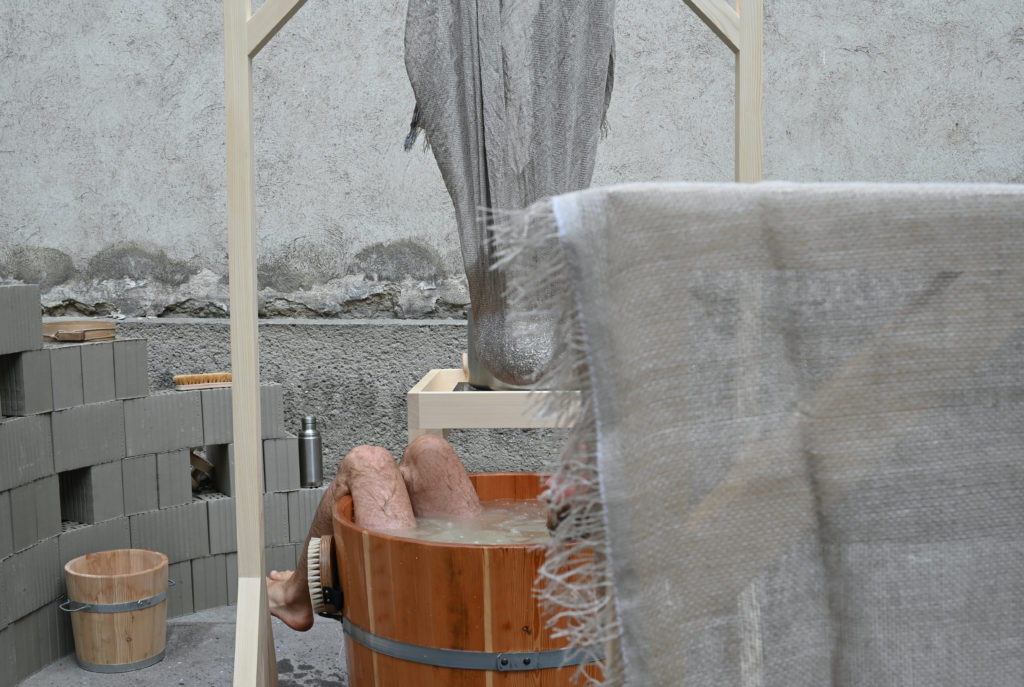
Hygiene and heritage
Hygiene is part of our cultural heritage and plays a primary role in our symbiotic relationships with microbes and other species as we evolved alongside each other. Valerie Curtis (1958-2020), former Director of the Environmental Health Group at the London School of Hygiene & Tropical Medicine argued that hygienic behaviour predates the evolution of humans and goes back at least 600 million years, with examples of creatures as basic as nematode worms avoiding diseases caused by bacteria. Ants groom themselves to remove fungal pathogens and isolate other ants that are either dead or diseased. Most mammals, fish and birds groom themselves to remove parasites that live on their skin or in scales and feathers. And bees produce their resinous cement called propolis to cover dead bees or defeated invaders in order to prevent the breakout of disease. “Disgust of dirt is a part of human nature”, Curtis writes, hypothesising that at its core, “disgust is what humans call the urge to avoid disease-relevant stimuli”.
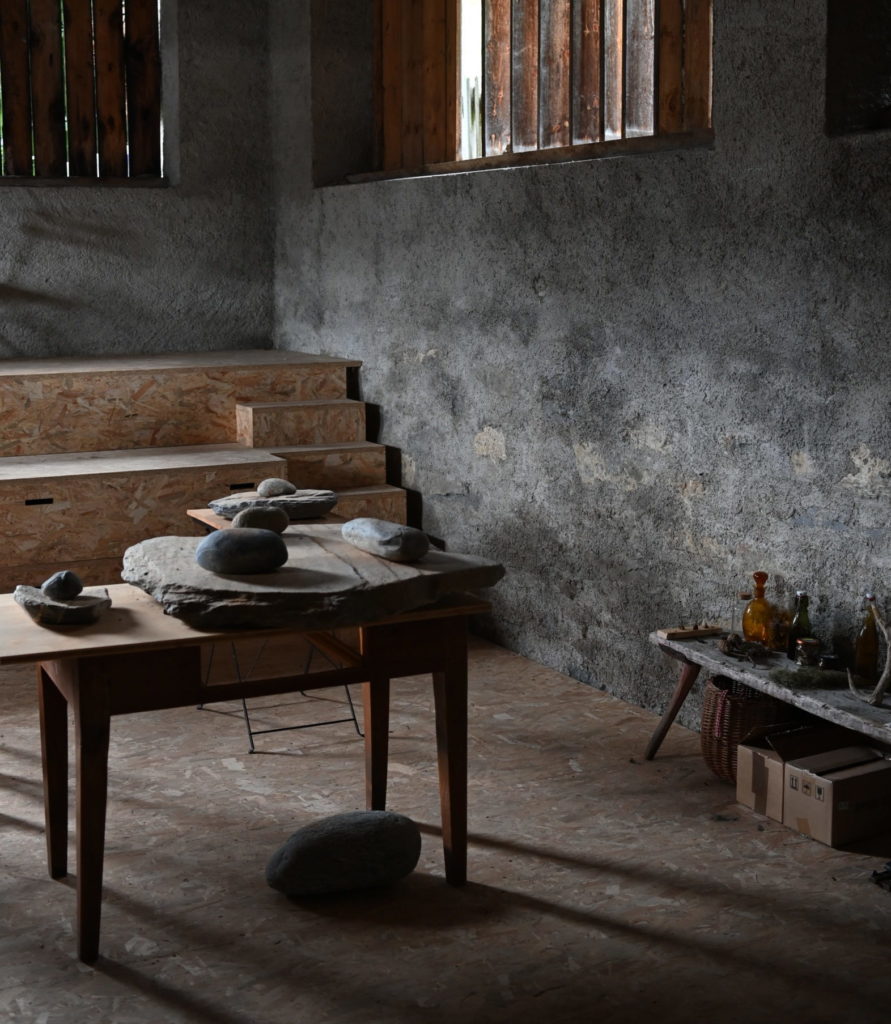
My preoccupation with the subject of hygiene began with one of my earlier projects called “Therianthropie” in which I wondered why we have developed this negative relationship with our own bodily “animal” smells, whereas in the animal world they are essential for interaction and communication within and between species. Many cultural hygiene practices (which of course vary from culture to culture) require us to deny such otherwise valuable means of fundamental information-embodied interaction. At the same time, we love to cover our own odours with alien scents, often originating from other animals. The result of the Therianthropie project was a series of soaps incorporating the scent of wild animals. With them I was asking: Once a scent is taken from its source, one that is considered “dirty” (animal smell) and then attached to a new host (soap) that is considered a token of cleanliness in our hygiene culture, does it become less dirty? Can we be clean yet still smell like animals?
Hygiene and health
The definitions and criteria of hygiene depend very much upon context, the moment in time and cultural surroundings. We live in a time where science is proving to us that sterilisation of our environment through synthetic cleaners and surrounding ourselves with “easy to clean” material surfaces, like stainless steel or plastics, does not necessarily protect us from harmful pathogens. Often the opposite occurs and we find ourselves in man-made sterile environments that harm us more than they do us good.
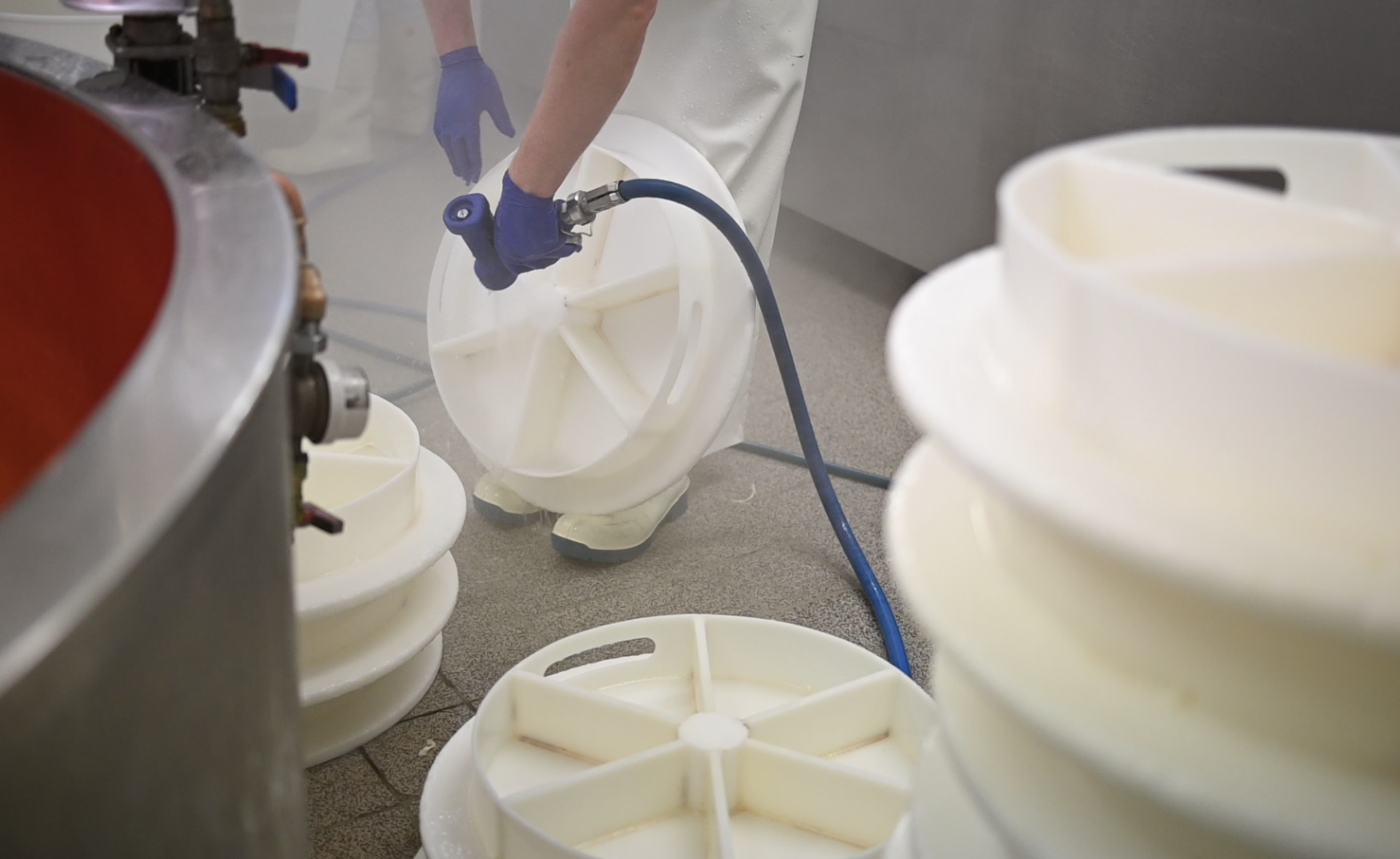
There has been a big shift in recent years from a germ theory of disease to a microbial theory of health, one where microbes are still recognised agents of infections but their ability to cause those infections is not dictated by their presence but by the balance of the entire (human/microbial) community. Lactic acid bacteria, for example, have been acknowledged to provide protection against pathogens and are known for their production of antimicrobial compounds.
In a collaborative project with Anastasia Eggers called “The Kitchen Bath” we investigated domestic spaces where human hygiene behaviours take place. By merging the bath and the kitchen we intended to highlight the close relationships with and consequences our hygiene culture has on our health and wellbeing. The result was a performative interaction with an environment that provoked coexistence rather than eradication of microbiological communities. By lifting food preparation out of a rigid space and blending body hygiene with food hygiene we sought to promote a peaceful coexistence between our bodily microbiomes and the foods we consume.
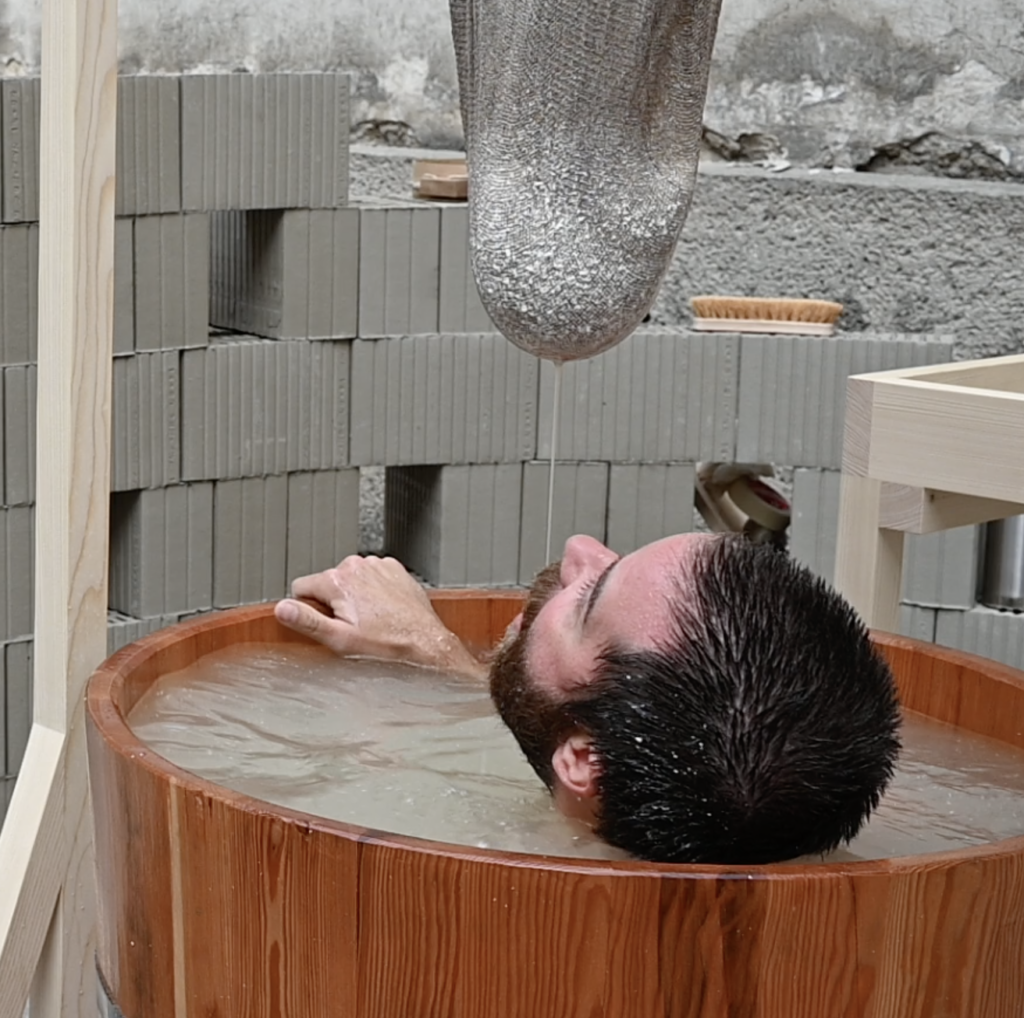
Hygiene and cheese
In cheesemaking, we encounter very similar issues to those affecting our own bodies. Cheese is a unique expression of the symbiotic interaction between humans, culture and nature, yet in modern cheesemaking, pasteurisation, sterile environments and sterile hands are destroying our inherited symbiotic relationships with microbes and our environments, and this is harming our communities more than theirs.
Living things hold great knowledge. Plant and animal species gather information from the environment, from interaction with other species and environmental conditions over a long period of time. This knowledge gathered within the landscape, from its flora and fauna, including microbial life forms, is ingested by mammals. In some cases, it is digested into milk that is infused with bacteria and enzymes. Thus milk also holds great knowledge. This unique substance serves offspring as the most efficient source of energy. As the first food ingested by almost all newborn mammals (including humans) milk has the important task of setting up the newborn’s internal microbiome, providing life-sustaining digestive functions, inside and outside their bodies.
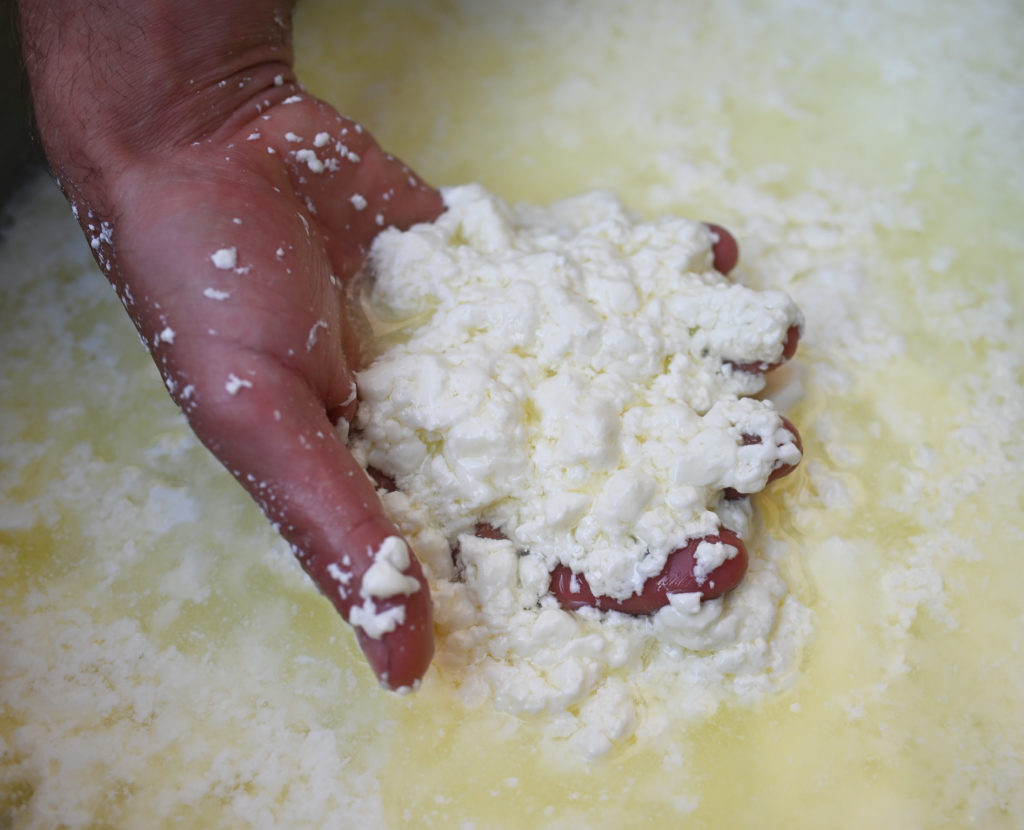
Taking that knowledge- (and health-) imparting function of milk further, artisanal farming and milking practices are considered to be an effective way of enabling a healthy microbial ecosystem on dairy farms. Traditional cheesemakers learned how to work with their relationship with nature. The repetitive process of artisanal cheese-making activates embodied memories, with the cheesemakers letting smell and taste guide them through the process. Microbes play a vital role in this collaboration. In many cases, they are responsible for flavours and smells within fermented food products, including cheese, unique to that specific geographical location – under the premise that we as humans allow them to have an influence.
Hygiene is one of the most important criteria in this process and has an impact on the flavour profile of cheese. By choosing a hygiene-based culture we define a flavour profile, a language that later on allows the product to express the authenticity of its origin.
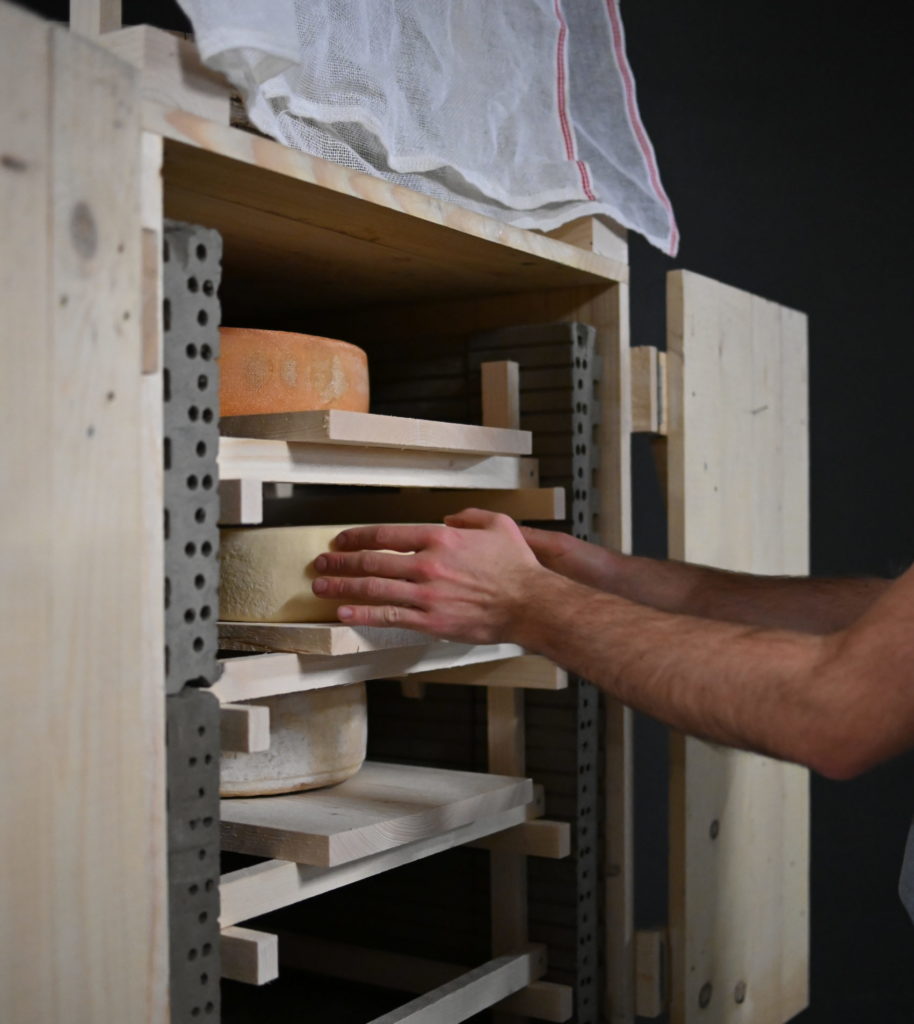
In 2019 I conducted an investigation into alpine dairy culture, again together with Anastasia Eggers, which led to the “Cosmopolitan Cheese” project. Respecting cheese as a medium that connects the land, animal and human and represents the relationships and interdependencies between them. Cheese that is made under traditional circumstances embodies the nearby terroir and manifests the collaboration between land, animal and human through its smell and taste. As terroir is specified by the geographical characteristics of a place but also the local cultural aspects, cheese can be seen as a product that talks about the identity of a place.
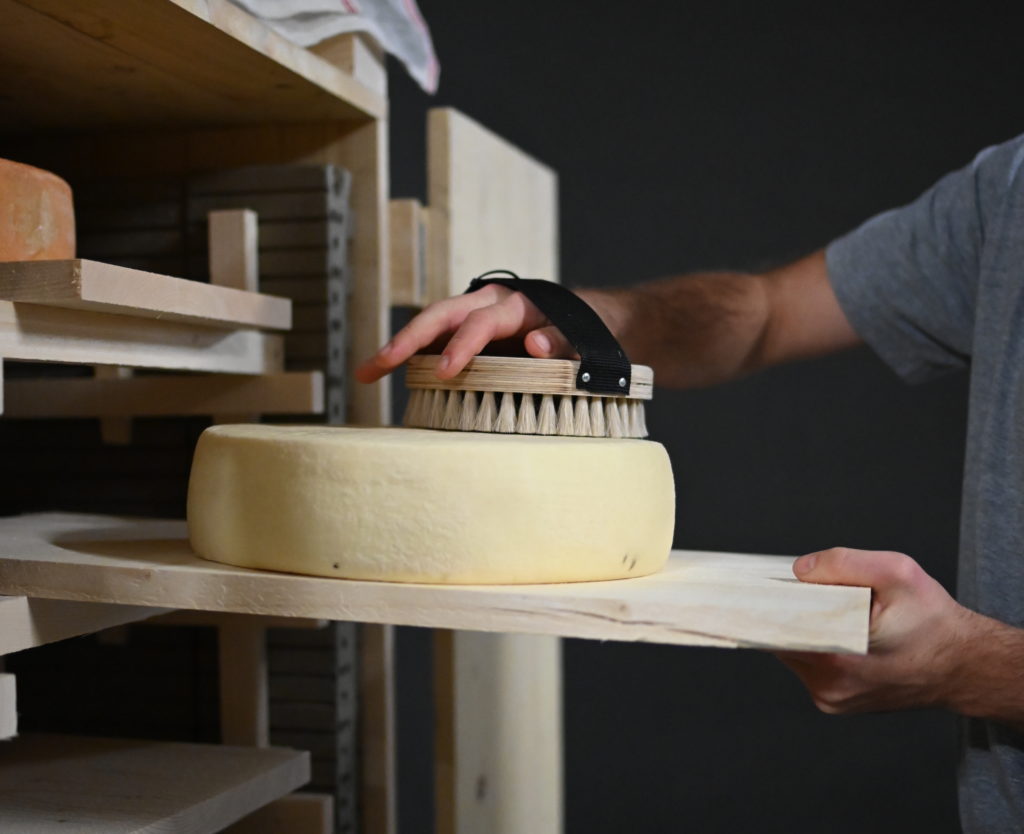
“Cosmopolitan Cheese” is a travelling exhibition that looks at how the local identity of cheese is developed through the interaction with bacteria. The installation is an assembly of tools and materials that are seen as touchpoints between cheese and bacteria.
In every location the travelling exhibition goes to, a cheese is created by local craftsmen and then placed in our mobile cheese cellar for ripening. The cheeses and the whey, which is applied to the walls of the mobile cellar, contribute cumulatively to the bacterial culture each time the cellar is moved. In this way, truly cosmopolitan conditions develop within it – and they, in turn, influence the cheese ripening process.
Wood and whey
Industrial cheese production does not allow much scope for bacterial interference. Pasteurisation of the milk (using heat treatments to sterilise and kill any microbes) enables industrial dairies to buy milk from great distances away. This mobility also leads to the standardisation of the quality and flavour of the milk. Plastic and stainless steel containers are used for the industrial cheese-making process to raise productivity and fulfil global hygiene standards. This forces the use of synthetic cleaning agents in order to avoid the proliferation of harmful microbes. In fact, the surfaces of these “dead materials” support a far higher multiplication of harmful bacteria, which is why a much more aggressive hygiene culture using synthetic agents is necessary.
Traditional techniques, on the contrary, profit from collaboration with bacteria. Traditional cheesemakers use wooden tools and heated leftover whey from cheese-making to clean and maintain their tools as well as the production space. In doing so, they make use of a symbiotic relationship between wood and whey. It is a bond that generates the conditions under which “good” microbes can colonise the material and production environment in the form of a biofilm on the surface of the wood.
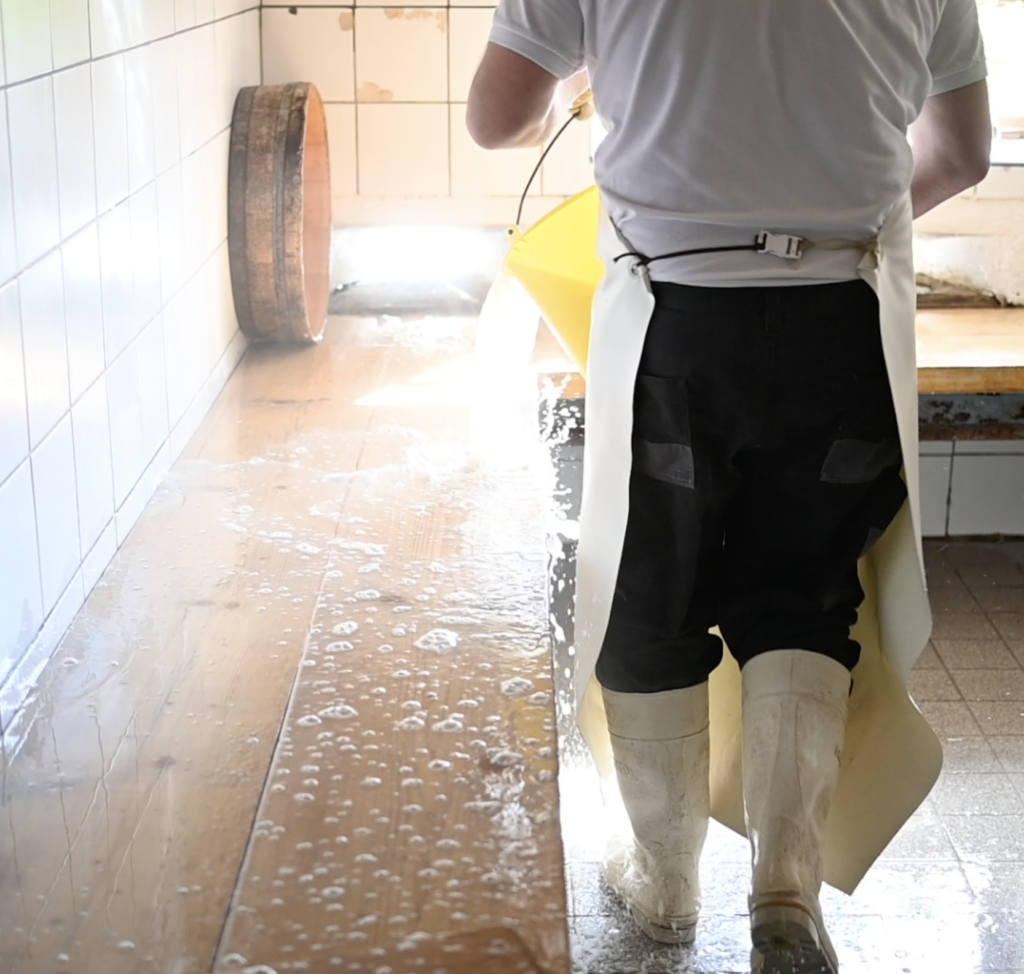
When milk is exposed to these lactic organism biofilms in wooden vats, acidification occurs and when cheese wheels are placed on wooden shelves imbued with this biofilm to mature, they are colonised with a surface flora. The complexity of the biofilms that establish themselves on wooden surfaces is a superb example of microbial biodiversity and the discovery of this biodiversity confirms one of the greatest characteristics of the territorial origin of the cheese.
Thus, in cheesemaking and other fermented foods, the hygiene culture chosen becomes an attitude, a choice of engagement, or disengagement – resulting in products that carry invisible connections with the natural, which allow us to maintain and re-establish essential embodied relationships with other species and our environments. For myself and my work, hygiene has become a powerful tool that allows our species to decide upon constructive or destructive relationships between multiple species and our own.
Philipp Kolmann was born and raised in Austria and currently lives between the Netherlands and Switzerland. He is a graduate of the Food Non Food department of the Design Academy Eindhoven. he is currently involved in a collaboration with the cultural Initiative Somalgors74 in Lower Engadin, working on an “Archive of alpine olfactory memories”, as well as site-specific flavour and scent consulting with companies in Mexico and Austria. he is also continuing his investigation into dairy culture and exploring possible shifts to plant-based process without sacrificing strong bonds to our landscapes and artisanal food culture. Read his first article for The Common Table, “What Is Us?”, here.






